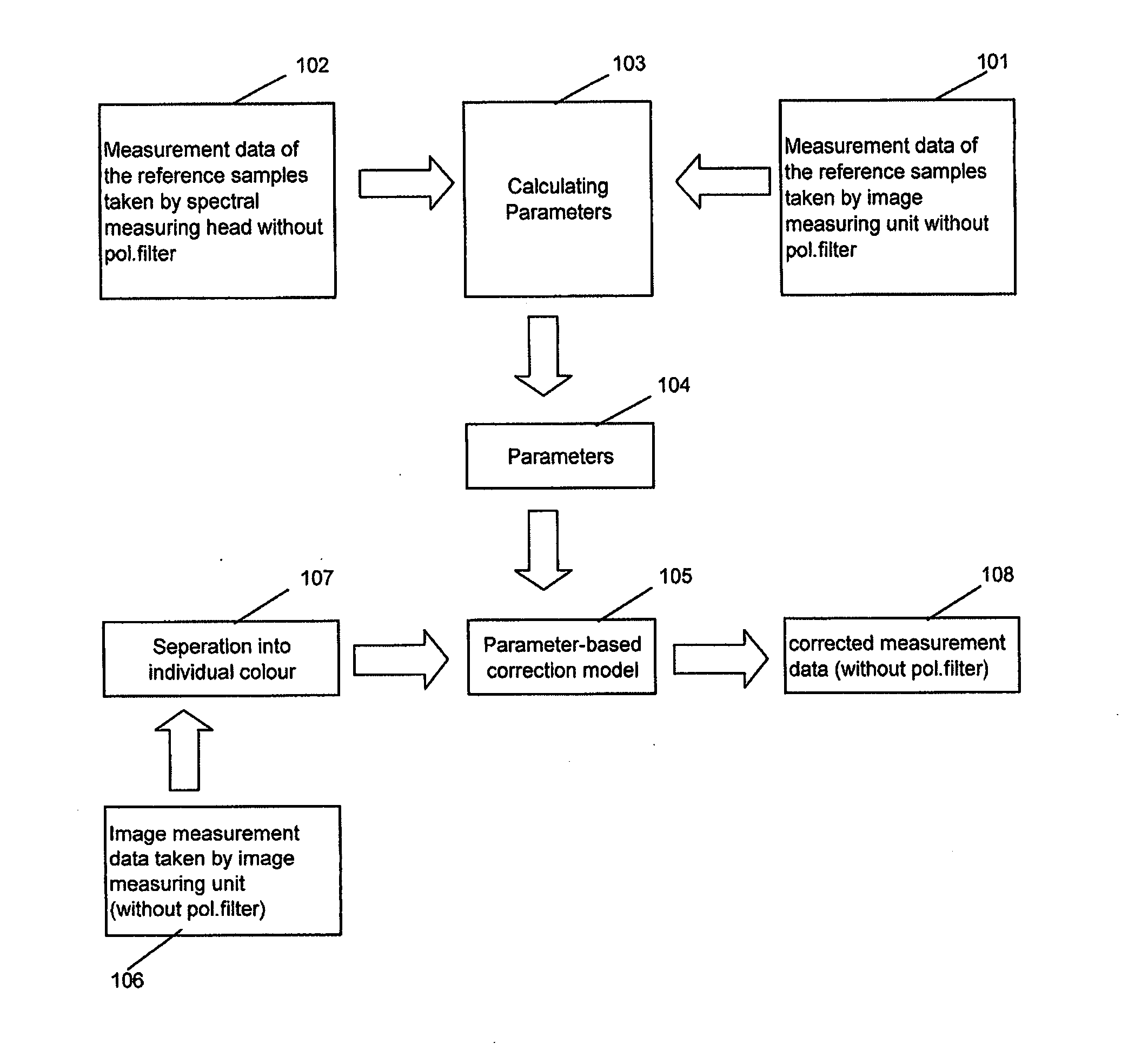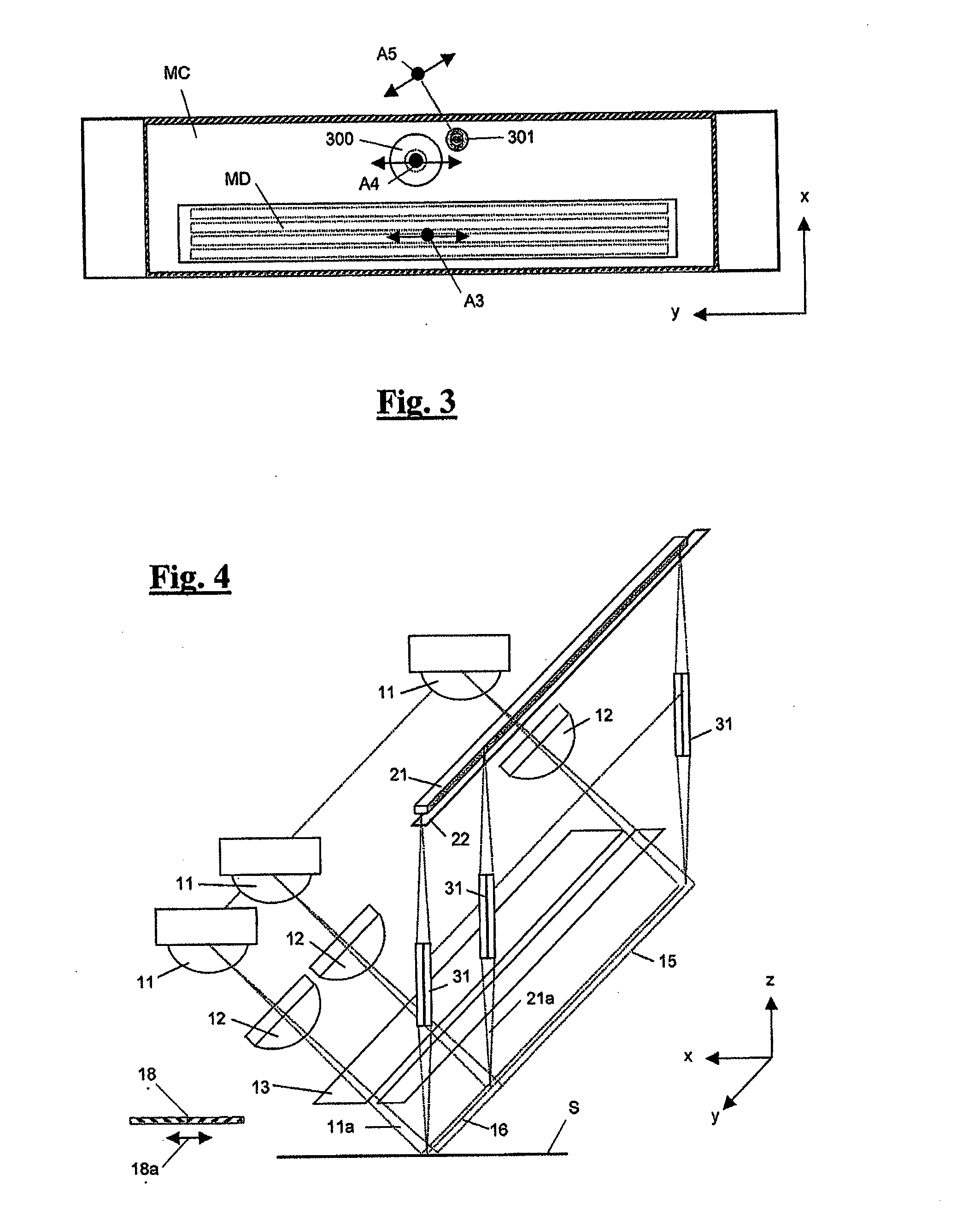Method for Correcting Measured Image Values
- Summary
- Abstract
- Description
- Claims
- Application Information
AI Technical Summary
Benefits of technology
Problems solved by technology
Method used
Image
Examples
Embodiment Construction
[0028]FIGS. 1-4 illustrate a preferred embodiment of the scanning device. In terms of its general construction, it corresponds to standard measuring apparatus, of the type typically used in the graphics industry for photoelectrically measuring printed sheets during a printing process on the basis of pixels, for example. Such printed sheets are also be referred to as measurement object or sample in the following description.
[0029] The scanning device comprises a sub-structure in the form of a measuring table MT with a usually inclined rectangular surface on which the measurement object S—the printed sheet to be measured—can be positioned. The printed sheet S typically contains various (in this example four) graphic illustrations P1-P4 and a (or several) color measuring strip CMS. In order to position the measurement object S, stops are provided on the measuring table MT, although these are not illustrated. The measurement object S is preferably secured on the measuring table MT by e...
PUM
 Login to View More
Login to View More Abstract
Description
Claims
Application Information
 Login to View More
Login to View More - R&D
- Intellectual Property
- Life Sciences
- Materials
- Tech Scout
- Unparalleled Data Quality
- Higher Quality Content
- 60% Fewer Hallucinations
Browse by: Latest US Patents, China's latest patents, Technical Efficacy Thesaurus, Application Domain, Technology Topic, Popular Technical Reports.
© 2025 PatSnap. All rights reserved.Legal|Privacy policy|Modern Slavery Act Transparency Statement|Sitemap|About US| Contact US: help@patsnap.com



